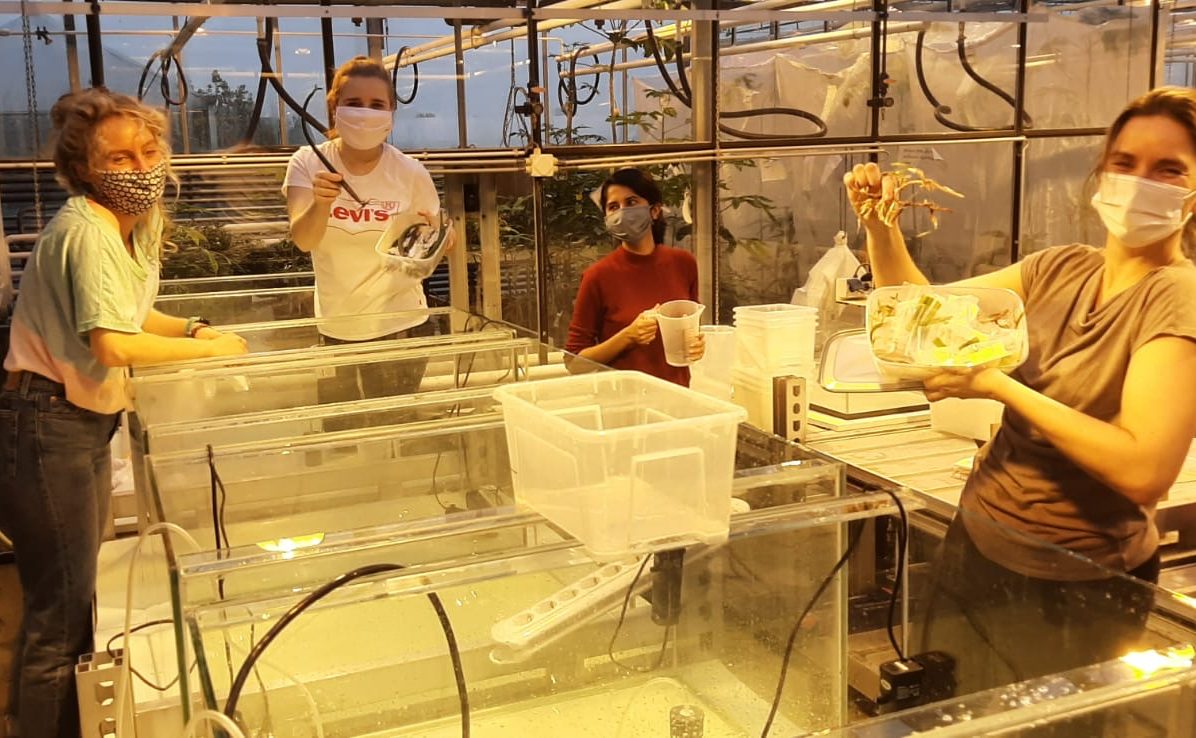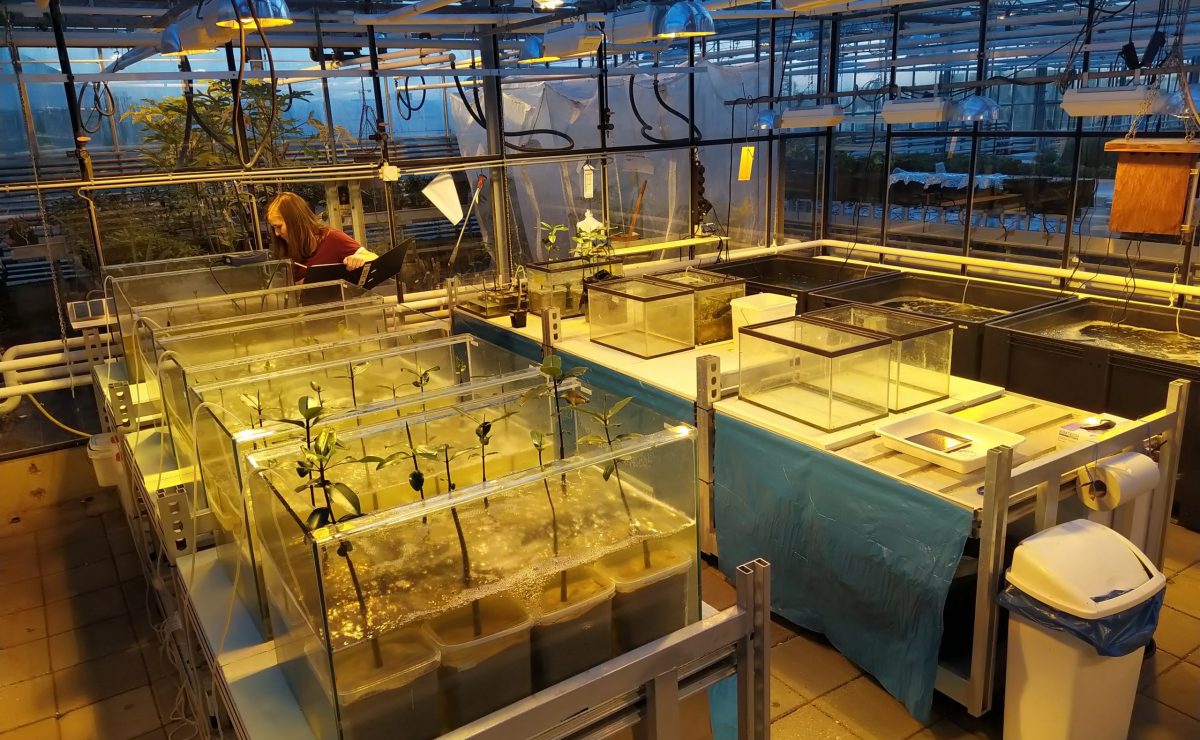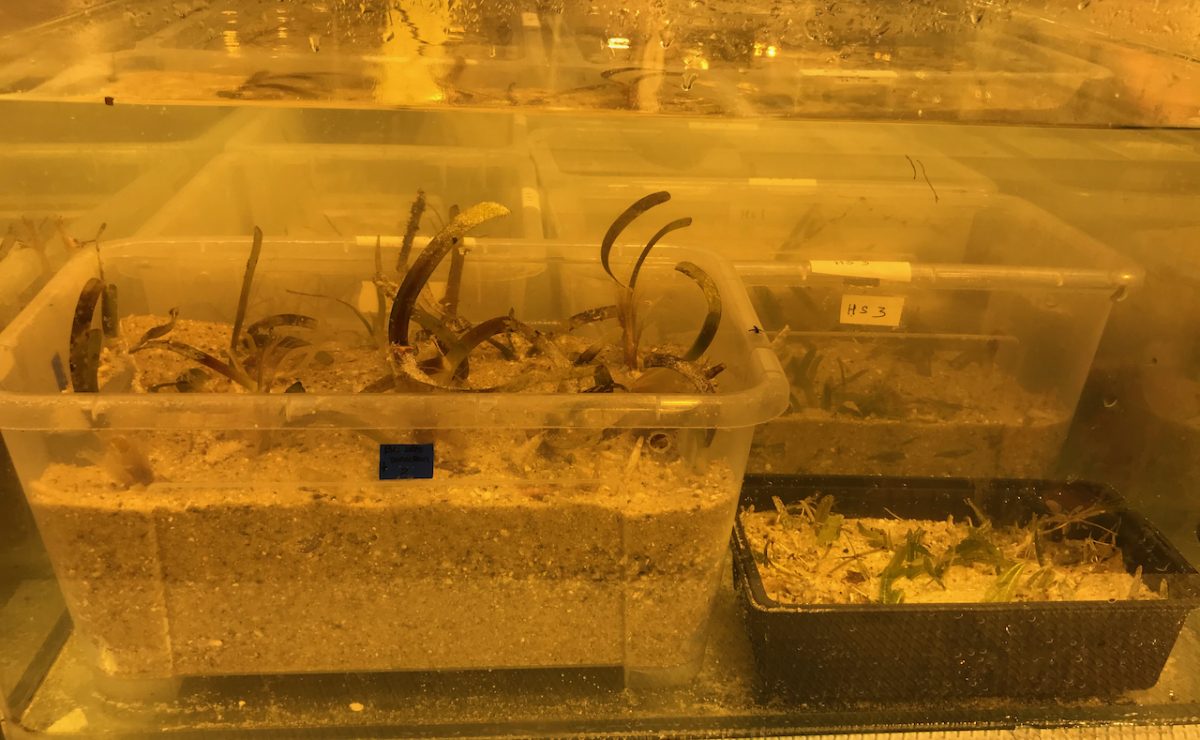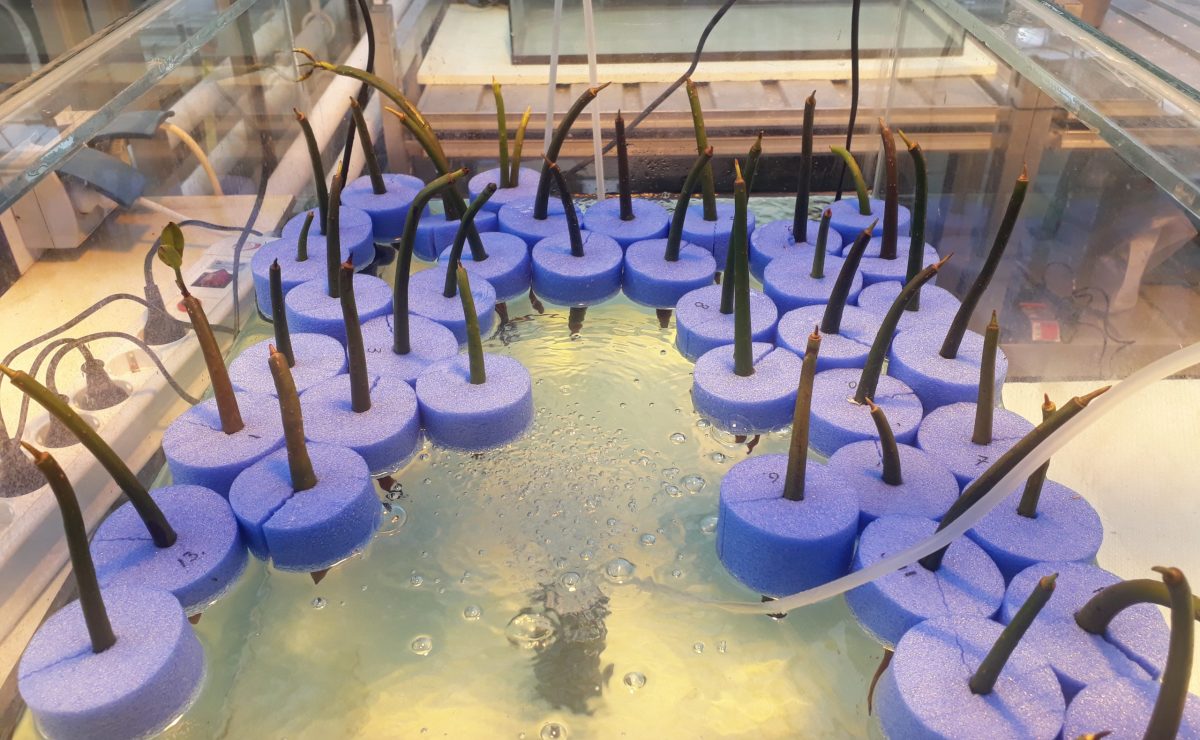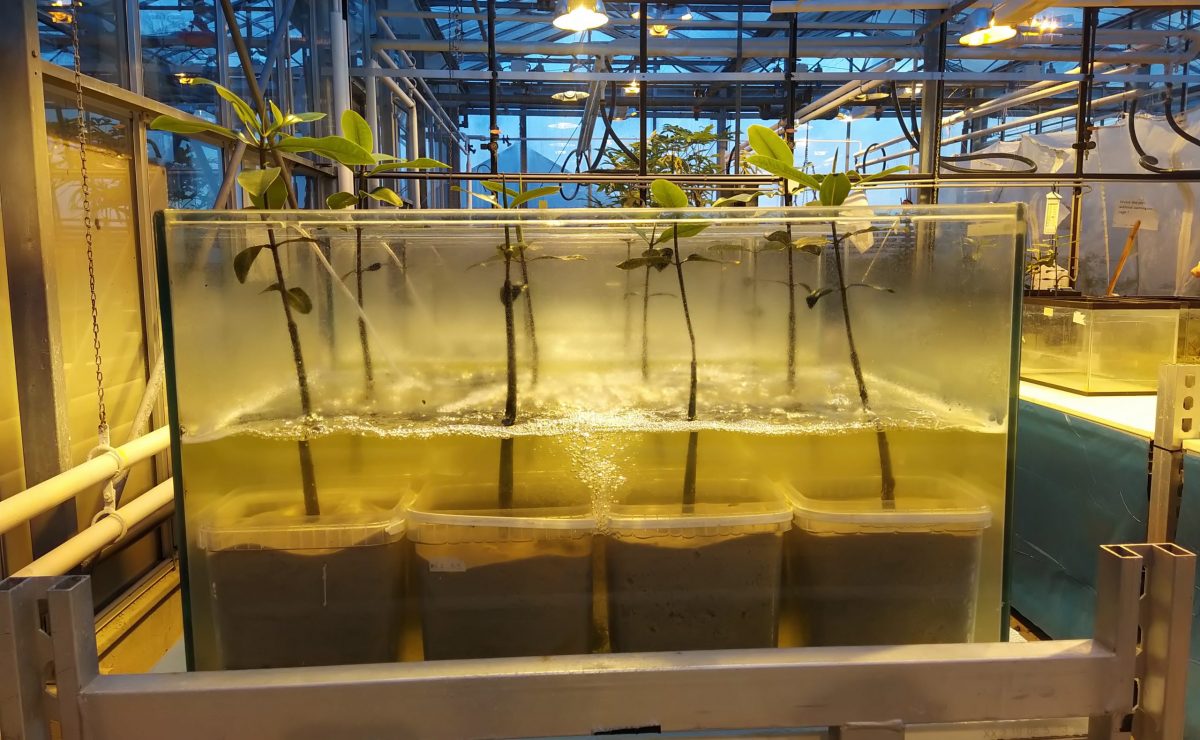Plant nursery brings tropics to Wageningen
NESSC-scientists in Wageningen start tropical plant nursery to continue research during the COVID-19 pandemic.
With their research, education and fieldwork areas out of reach by the COVID-19 restrictions, NESSC-scientists at Wageningen University (WUR) have come up with a creative solution to continue their studies on tropical marine ecosystems: by starting a tropical plant nursery they brought the tropics to the landlocked town of Wageningen.
Over the past year, the COVID-19 pandemic, the ensuing lockdown periods and worldwide travel restrictions have disrupted private and work lives all around the globe. NESSC-scientists at the Aquatic Ecology and Water Quality Management group at WUR were faced with an additional challenge: how to study the effects of climate change on tropical coastal system without being able to conduct fieldwork abroad? Marjolijn Christianen, Sara Pino Cobacho and Fee Smulders, together with laboratory technician Dorine Dekkers, decided to bring the tropics close to home by starting their own tropical plant nursery.
Mangroves and seagrasses
Arrangements to find a suitable location for the nursery began in summer 2020, and was found at the Nergena greenhouse complex at Unifarm, Wageningen. Plant material was then collected and transported largely from Bonaire, Dutch Caribbean. Plants were also provided by Burger’s Zoo in Arnhem. In only a few months, a large culture of marine plants, consisting of different species of mangroves and tropical seagrass, found a home in Wageningen.
The tropical nursery is now fully functional and makes it possible to work with real-life tropical marine plants, providing both researchers and students with unique opportunities to advance their knowledge on tropical coastal systems. NESSC-researchers can continue their research on the resilience of tropical coastal systems, their interactions and changes triggered by climate change and climate-driven anthropogenic pressures. Additionally, the experimental data generated using these cultures also allow further Bachelor and Master student projects which availability also were severely reduced by COVID-19.
Acknowledgements
This achievement would have not been possible without the involvement of student Liesa Celie as well as the Burgers’ Zoo, in particular Willeke Huizinga and Thomas Dros, who supplied some of the the biological material to be used in this project. We are also grateful to Frits Gillissen, laboratory technician at the Aquatic Ecology and Water Quality Management group (WUR), students Lisa Hoekema and Divyashri Varadharajan and the technical support staff at Nergena.


